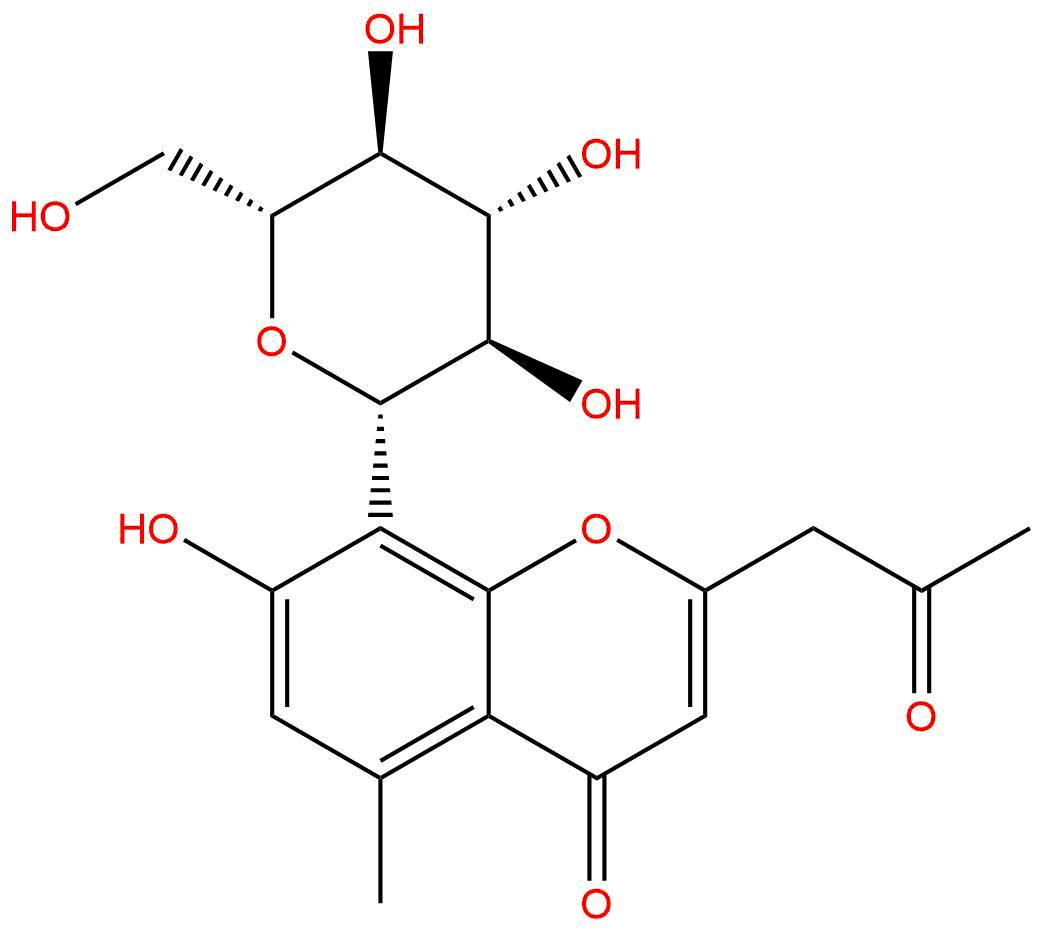
AloesinCAS No.:30861-27-9
|
||||||||||
 |
|
|
||||||||

| Catalogue No.: | BP4356 |
| Formula: | C19H22O9 |
| Mol Weight: | 394.376 |
Product name: Aloesin
Synonym name: Aloe resin B; Aloeresin
Catalogue No.: BP4356
Cas No.: 30861-27-9
Formula: C19H22O9
Mol Weight: 394.376
Botanical Source:
Type of Compound:
Purity: 95%~99%
Analysis Method: HPLC-DAD or/and HPLC-ELSD
Identification Method: Mass, NMR
Packing: Brown vial or HDPE plastic bottle
The product could be supplied from milligrams to grams
Inquire for bulk scale.
Aloesin is isolated from freshAloe veraleaves, as well as from other species ofAloe. It is a moderately high molecular weight hydroxy C-glycosylated chromone derivative.
It is a natural compound that has demonstrated appreciable depigmenting activity due to its ability to inhibittyrosinase activity. It is among the top choices for cosmetic and therapeutic applications to lighten skin.
The reputable Aloe vera or Aloe barbadensis has been scientifically proven for all forms of burn, be it radiation, thermal, or solar. It has also been demonstrated that it has a prophylactic effect if used before, during, and after these skin-damaging events. Aloe vera is a uniquely effective moisturizer and healing agent for the skin.
References
1.Modulation of melanogenesis by aloesin: a competitive inhibitor of tyrosinase
Pigment Cell Res 2002 Oct;15(5):335-40.
Abstract
Aloesin, [2-acetonyl-8-beta-d-glucopyranosyl-7-hydroxy-5-methylchromone], a compound isolated from the Aloe plant, is shown in these studies to modulate melanogenesis via competitive inhibition of tyrosinase. Aloesin inhibits purified tyrosinase enzyme and specifically inhibits melanin production in vitro. Enzyme kinetics studies using normal human melanocyte cell lysates and cell-based melanin production demonstrated that aloesin is a competitive inhibitor of tyrosinase from mushroom, human and murine sources. Tyrosine hydroxylase and 3,4-dihydroxyphenylalanine (DOPA) oxidase activities of tyrosinase from normal human melanocyte cell lysates were inhibited by aloesin in a dose dependent manner. In a percutaneous absorption study a finite dose of aloesin penetrated the skin slowly and was recovered primarily in the surface wash. Aloesin shows promise as a pigmentation-altering agent for cosmetic or therapeutic applications.
2. Effects of aloesin on melanogenesis in pigmented skin equivalents.
Int J Cosmet Sci. 2008 Apr;30(2):121-30
3. The effects of aloesin and arbutin on cultured melanocytes in a synergetic method
Zhonghua Zheng Xing Wai Ke Za Zhi. 2004 Sep;20(5):369-71
4.Aloesin and arbutin inhibit tyrosinase activity in a synergistic manner via a different action mechanism.
Arch Pharm Res. 1999 Jun;22(3):232-6.
5. Anti-inflammatory constituents, aloesin and aloemannan in Aloe species and effects of tanshinon VI in Salvia miltiorrhiza on heart
Yakugaku Zasshi. 2003 Jul;123(7):517-32.
HPLC of Aloesin
